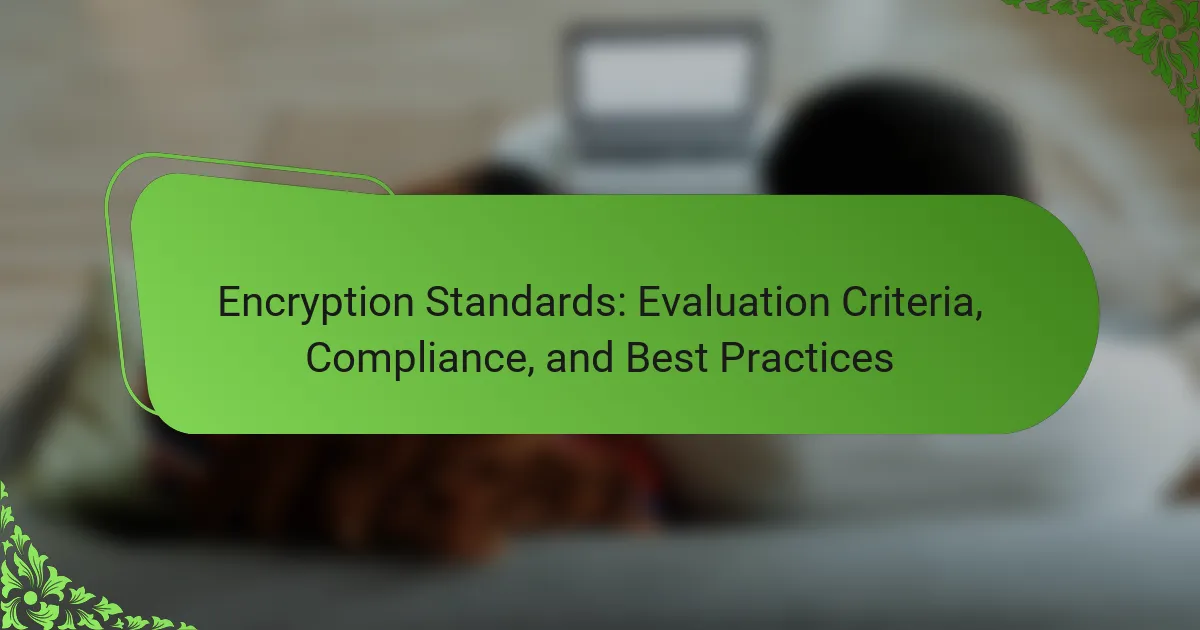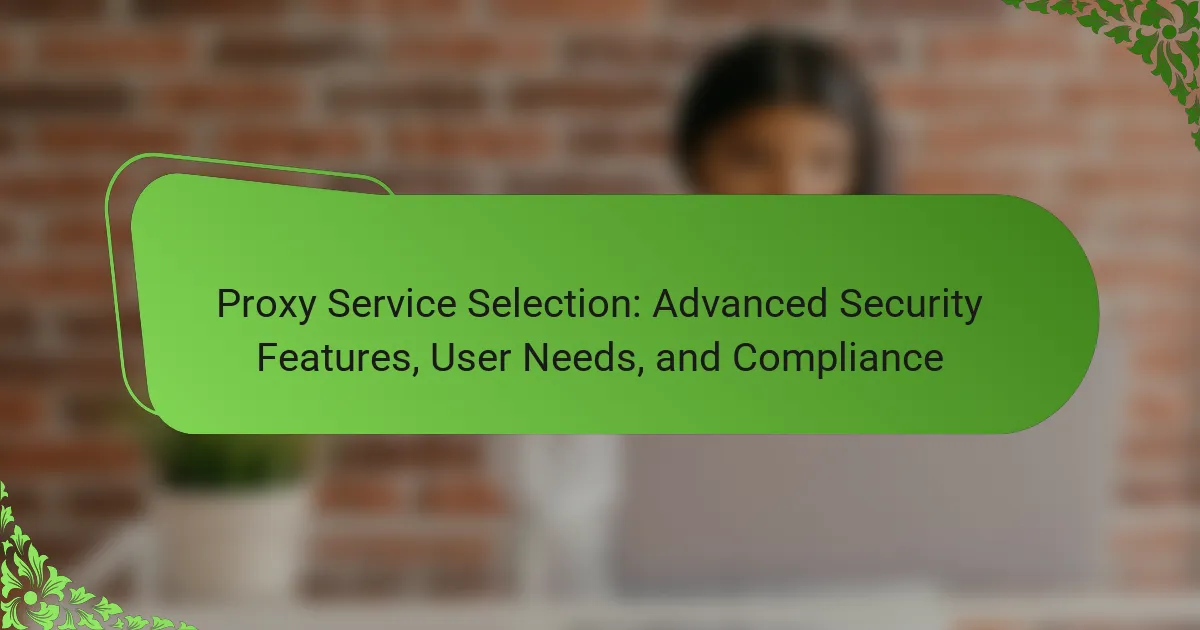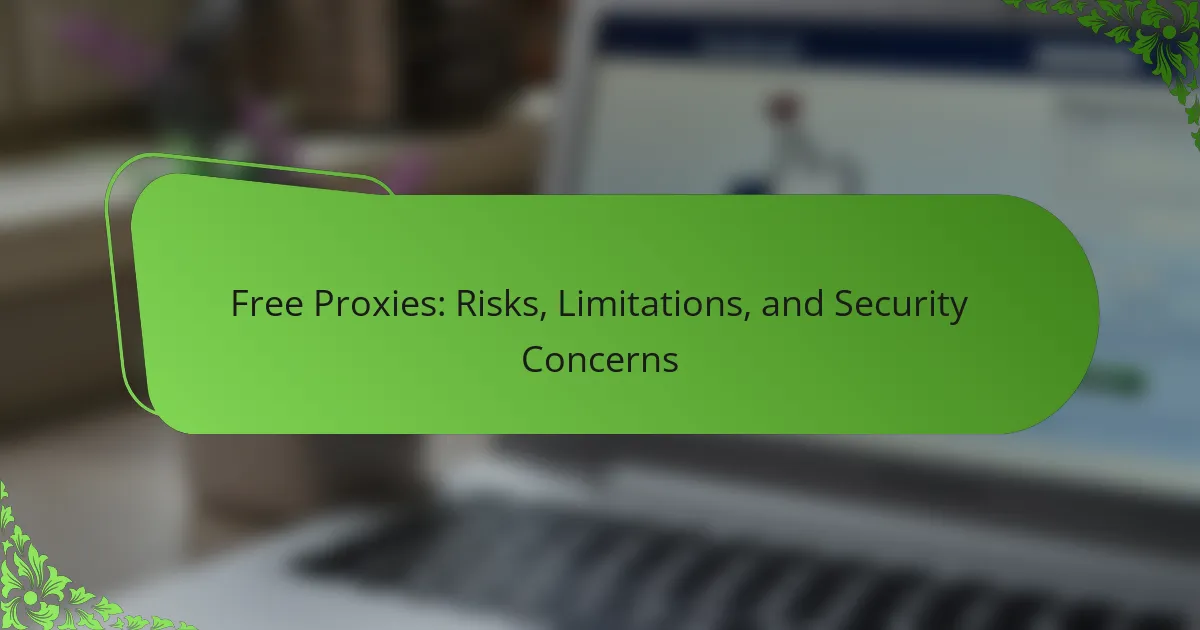Encryption standards play a vital role in safeguarding data security and privacy, particularly for SaaS applications. By evaluating these standards based on effectiveness, compliance, and organizational needs, businesses can ensure robust protection against unauthorized access while adhering to regulatory requirements. Implementing best practices, such as strong key management and regular protocol updates, is essential for maintaining a secure and compliant environment.
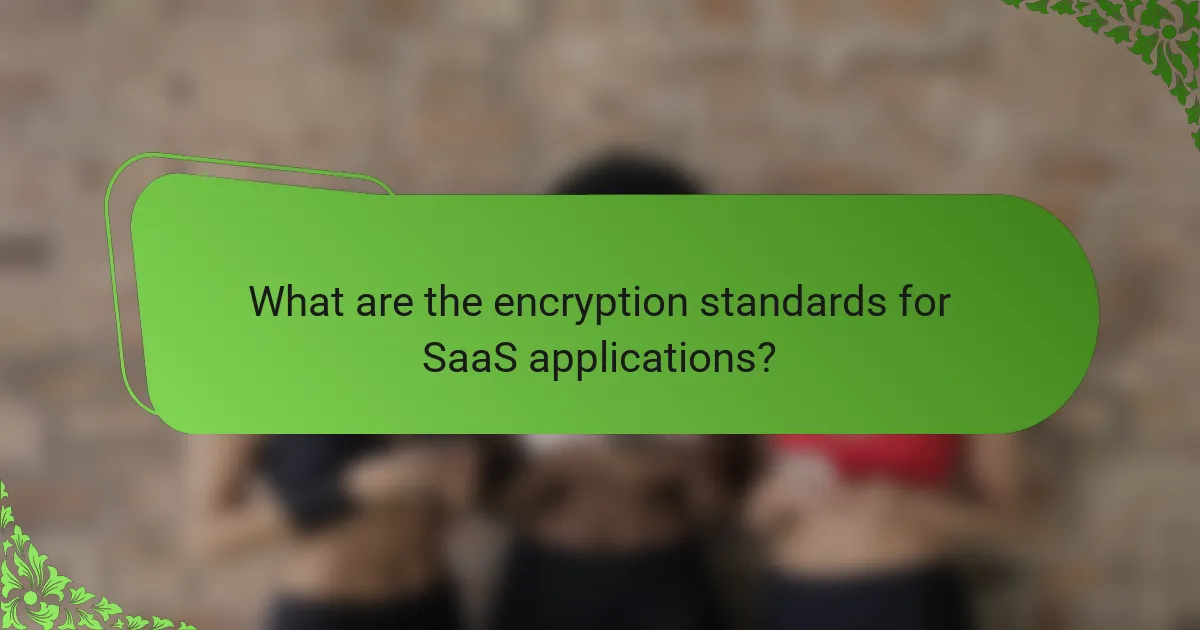
What are the encryption standards for SaaS applications?
Encryption standards for SaaS applications are essential protocols that ensure data security and privacy. These standards help protect sensitive information from unauthorized access and are critical for compliance with various regulations.
AES (Advanced Encryption Standard)
AES is a widely adopted encryption standard used to secure data in transit and at rest. It operates on fixed block sizes of 128 bits and supports key sizes of 128, 192, and 256 bits, making it versatile for different security needs.
When implementing AES, consider using the 256-bit key for maximum security, especially for sensitive data. AES is efficient and fast, making it suitable for real-time applications, but ensure that your implementation follows best practices to avoid vulnerabilities.
RSA (Rivest-Shamir-Adleman)
RSA is a public-key encryption standard primarily used for secure data transmission. It relies on the mathematical difficulty of factoring large prime numbers, which makes it secure for encrypting small amounts of data, such as encryption keys.
For practical use, RSA key sizes typically range from 2048 to 4096 bits, with larger keys providing enhanced security. However, RSA is slower than symmetric encryption methods like AES, so it is often used in conjunction with them to encrypt data securely.
ChaCha20
ChaCha20 is a stream cipher known for its speed and security, particularly in mobile and low-power environments. It offers an alternative to AES and is designed to be efficient on a wide range of devices.
This encryption standard is particularly effective in scenarios where performance is critical, such as in real-time communications. When using ChaCha20, ensure that you pair it with an appropriate authentication method, like Poly1305, to maintain data integrity and security.
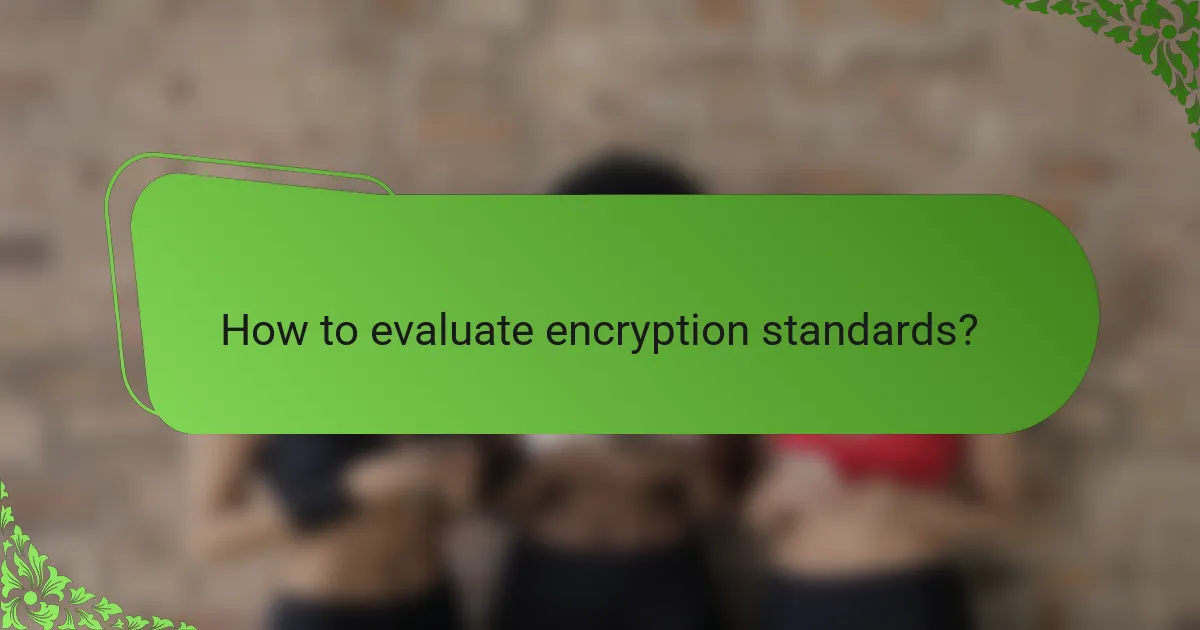
How to evaluate encryption standards?
Evaluating encryption standards involves assessing their effectiveness, compliance with regulations, and suitability for your specific needs. Key factors include adherence to established guidelines, performance metrics, and the ability to scale with your organization.
Compliance with NIST guidelines
Compliance with NIST (National Institute of Standards and Technology) guidelines is crucial for ensuring that encryption methods meet recognized security benchmarks. NIST provides a framework that includes specific recommendations for encryption algorithms and key management practices.
When evaluating encryption standards, check if they align with NIST’s Special Publication 800-175 series, which outlines cryptographic standards. Using compliant encryption can help organizations avoid vulnerabilities and ensure regulatory adherence.
Performance metrics
Performance metrics are essential for understanding how encryption standards impact system efficiency. Key metrics include encryption and decryption speed, latency, and resource consumption.
For example, a standard that encrypts data in low tens of milliseconds per transaction may be preferable for high-traffic applications. Benchmarking against established performance standards can help you select the most suitable encryption method for your needs.
Scalability considerations
Scalability is a vital aspect when evaluating encryption standards, especially for growing organizations. An effective encryption solution should maintain performance levels as data volume and user numbers increase.
Consider whether the encryption standard can handle increased loads without significant degradation in speed or security. Solutions that offer modular scalability, allowing you to adjust resources as needed, are often more advantageous in the long run.
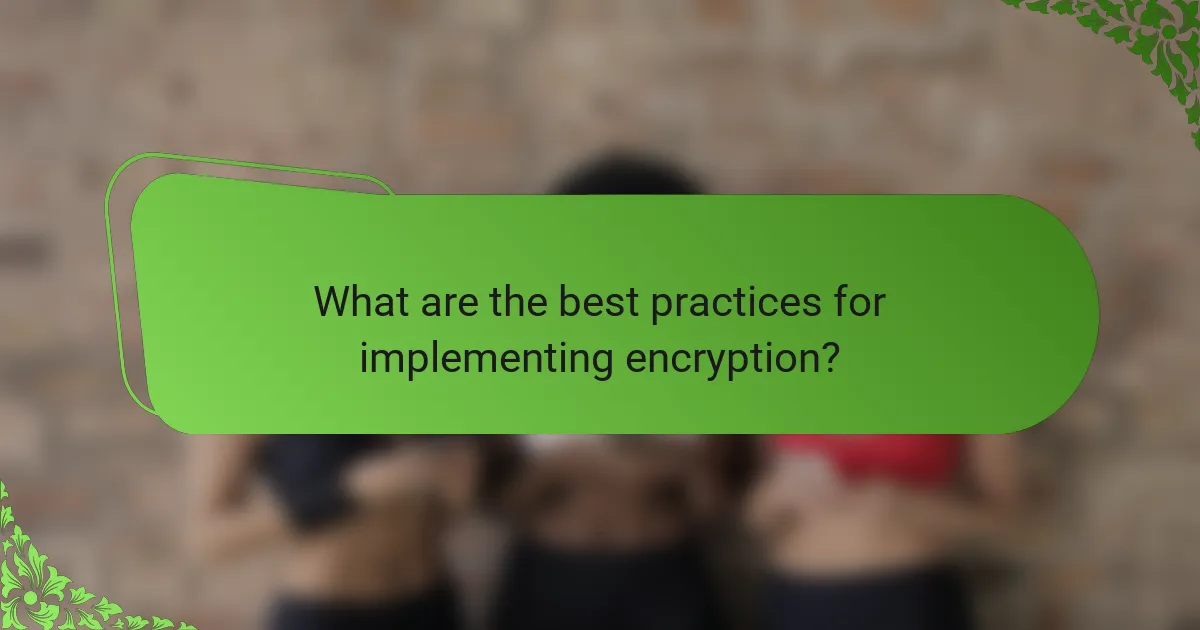
What are the best practices for implementing encryption?
Implementing encryption effectively requires a strategic approach that prioritizes security and compliance. Key practices include strong key management, regular updates to encryption protocols, and conducting thorough security audits.
Use strong key management
Strong key management is essential for protecting encryption keys from unauthorized access. This involves generating keys using secure methods, storing them in protected environments, and ensuring that only authorized personnel have access.
Consider using hardware security modules (HSMs) or cloud-based key management services that comply with industry standards. Regularly rotate keys and implement policies for key lifecycle management to minimize risks.
Regularly update encryption protocols
Regular updates to encryption protocols help safeguard against emerging threats and vulnerabilities. Stay informed about the latest standards, such as AES-256 or RSA-2048, and ensure your systems are configured to use these protocols.
Establish a schedule for reviewing and updating encryption methods, ideally every few years or whenever significant vulnerabilities are discovered. This proactive approach can prevent potential breaches and maintain compliance with regulations.
Conduct security audits
Conducting regular security audits is crucial for identifying weaknesses in your encryption implementation. These audits should assess both the technical aspects of encryption and the effectiveness of key management practices.
Utilize third-party security experts to perform comprehensive evaluations and provide recommendations. Document findings and remediate issues promptly to ensure ongoing protection of sensitive data.
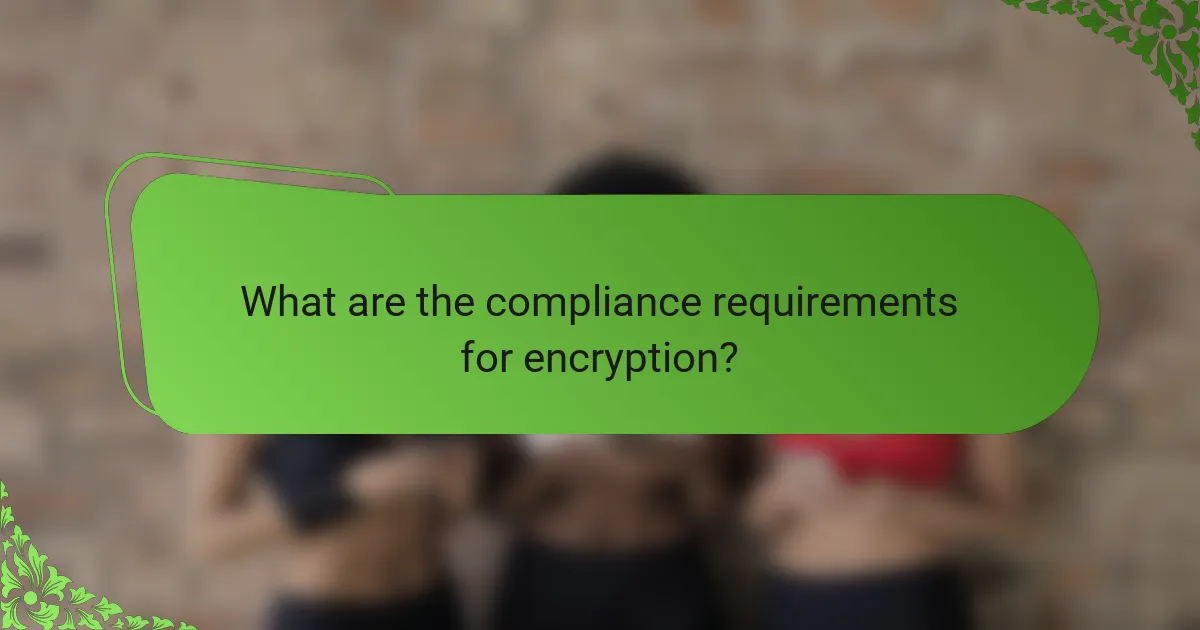
What are the compliance requirements for encryption?
Compliance requirements for encryption vary by regulation and industry but generally focus on protecting sensitive data through strong encryption methods. Organizations must implement encryption standards that align with specific regulations to ensure data confidentiality and integrity.
GDPR (General Data Protection Regulation)
The GDPR mandates that personal data must be processed securely, and encryption is a key measure to achieve this. Organizations handling data of EU citizens must ensure that any personal information is encrypted to protect against unauthorized access.
To comply, businesses should assess their data processing activities and implement encryption for both data at rest and data in transit. Regular audits and updates to encryption methods are essential to maintain compliance and adapt to evolving threats.
HIPAA (Health Insurance Portability and Accountability Act)
HIPAA requires healthcare organizations to protect patient information through various safeguards, including encryption. Covered entities must encrypt electronic protected health information (ePHI) to prevent unauthorized access and ensure patient confidentiality.
To meet HIPAA requirements, organizations should use encryption for ePHI both during transmission and when stored. Implementing strong access controls and conducting risk assessments regularly are also critical steps to ensure ongoing compliance.
PCI DSS (Payment Card Industry Data Security Standard)
The PCI DSS outlines security measures for organizations that handle credit card information, with encryption being a fundamental requirement. Merchants must encrypt cardholder data during transmission across open networks to protect against data breaches.
To comply with PCI DSS, businesses should implement strong encryption protocols such as AES or RSA and ensure that encryption keys are managed securely. Regular vulnerability assessments and compliance checks are necessary to maintain adherence to these standards.
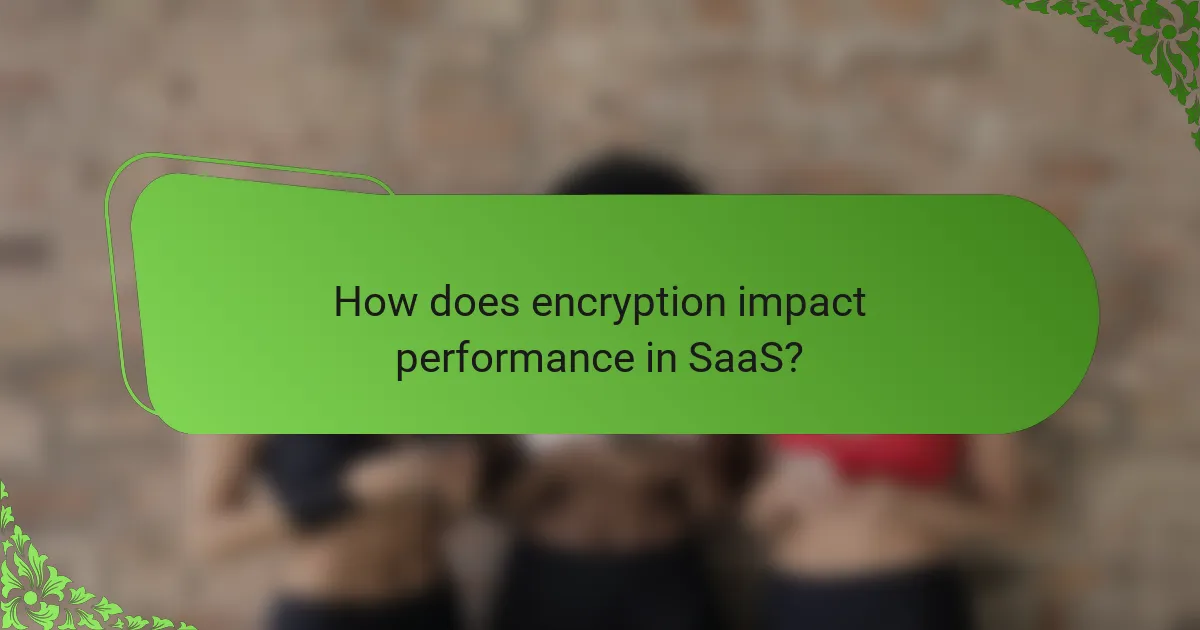
How does encryption impact performance in SaaS?
Encryption can significantly affect performance in Software as a Service (SaaS) applications by introducing latency and consuming additional resources. While encryption enhances security, it is essential to balance this with the performance needs of users to ensure a seamless experience.
Latency considerations
Encryption adds latency to data transmission, as it requires processing time for both encryption and decryption. This delay can range from low tens of milliseconds to higher values, depending on the encryption algorithm used and the volume of data being processed. Choosing efficient algorithms and optimizing key management can help mitigate latency issues.
To minimize latency, consider using hardware acceleration for encryption tasks or implementing caching strategies for frequently accessed data. Regular performance testing can also identify bottlenecks related to encryption processes.
Resource consumption
Encryption consumes additional CPU and memory resources, which can impact overall system performance, especially in high-traffic scenarios. The extent of resource consumption varies based on the encryption method and the infrastructure used. For instance, symmetric encryption typically requires less computational power than asymmetric encryption.
To manage resource consumption effectively, assess the trade-offs between security levels and performance. Implementing scalable cloud solutions can also help accommodate increased resource demands without sacrificing performance.
Impact on user experience
The performance implications of encryption can directly affect user experience, leading to slower response times and potential frustration. Users expect quick access to services, and any noticeable delay can diminish satisfaction and engagement. It is crucial to strike a balance between robust security measures and maintaining a responsive application.
To enhance user experience, consider employing techniques such as lazy loading of encrypted data or optimizing data transfer protocols. Regularly gathering user feedback can also provide insights into how encryption impacts their experience, allowing for targeted improvements.
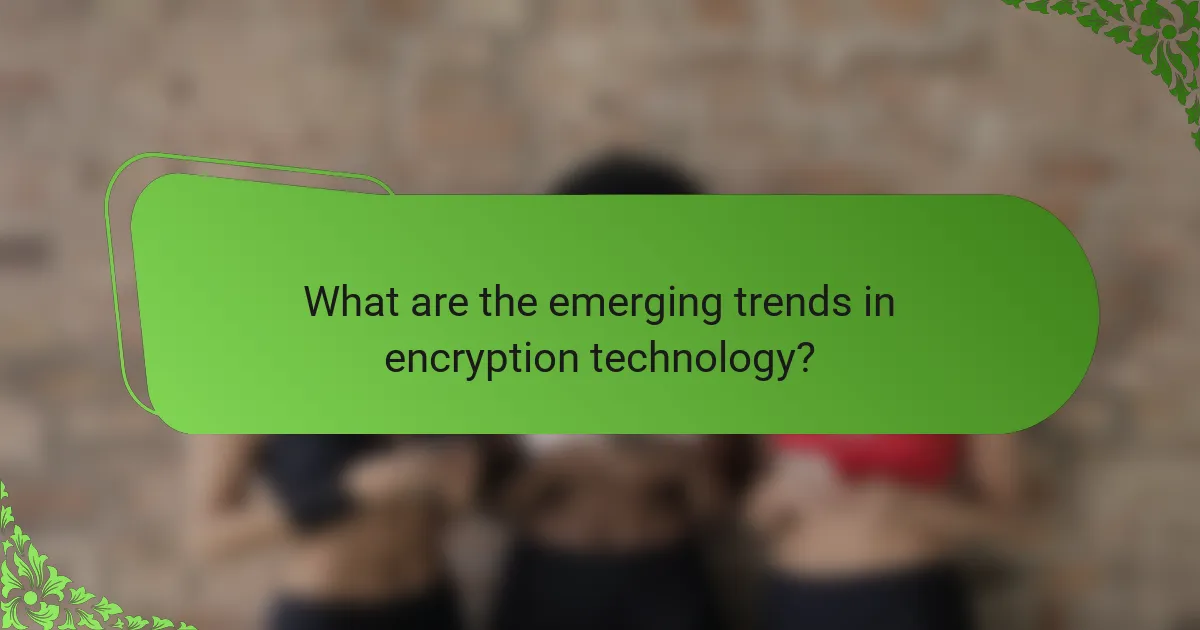
What are the emerging trends in encryption technology?
Emerging trends in encryption technology focus on enhancing security against evolving threats, particularly from quantum computing. Key developments include post-quantum cryptography, which aims to create algorithms resistant to quantum attacks, and advancements in homomorphic encryption, enabling computations on encrypted data without decryption.
Post-quantum cryptography
Post-quantum cryptography refers to cryptographic algorithms designed to secure data against potential quantum computer attacks. Traditional encryption methods, such as RSA and ECC, may become vulnerable as quantum technology advances, necessitating the development of new standards.
Key considerations for implementing post-quantum cryptography include evaluating the readiness of algorithms and their performance impacts. Many post-quantum algorithms are still under review, with some expected to be standardized in the coming years. Organizations should start planning for a transition to these new standards to ensure long-term data security.
Common pitfalls include delaying the adoption of post-quantum solutions until quantum computers are fully operational. Instead, businesses should begin integrating hybrid systems that combine traditional and post-quantum algorithms to safeguard against immediate threats while preparing for future challenges.






